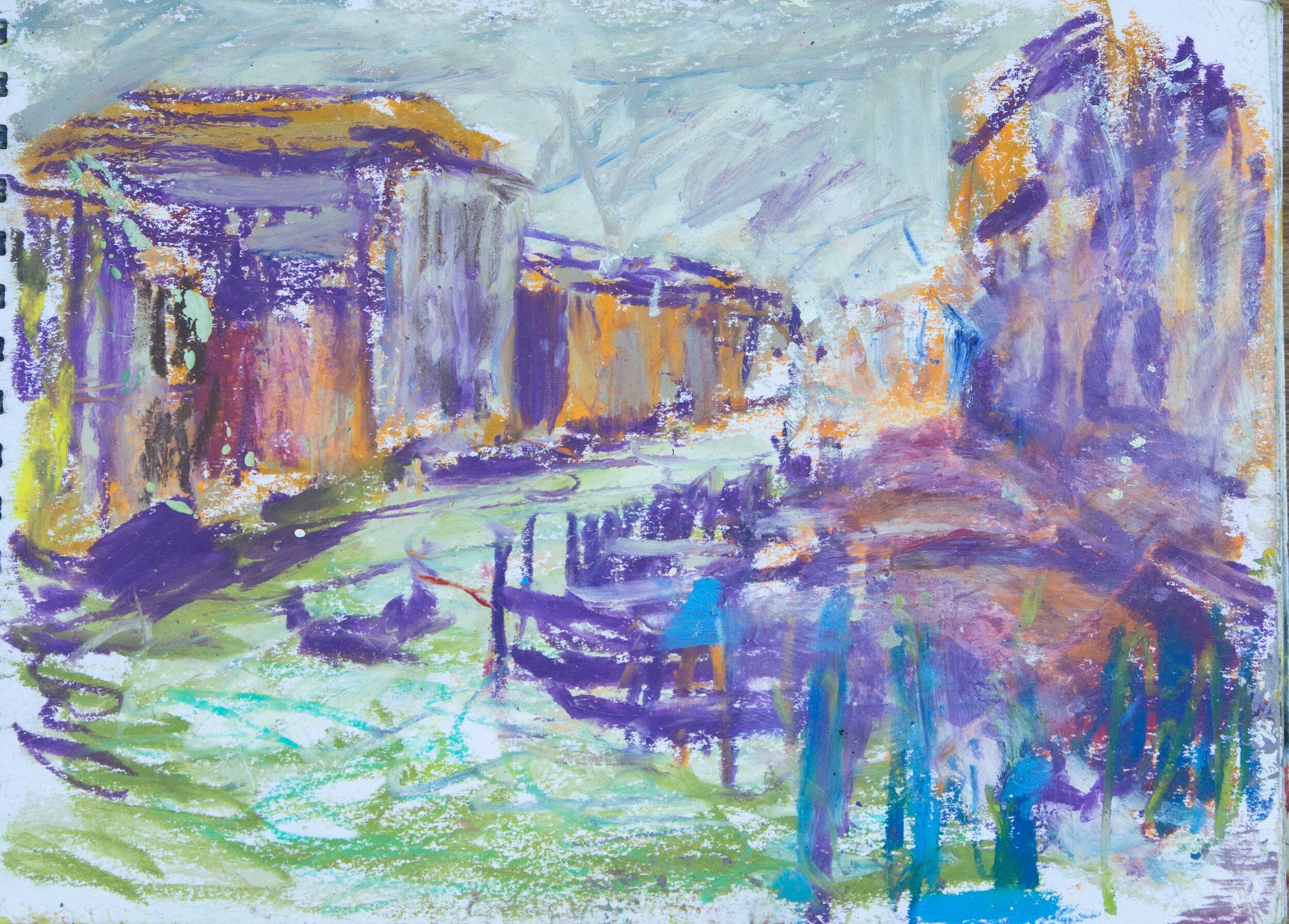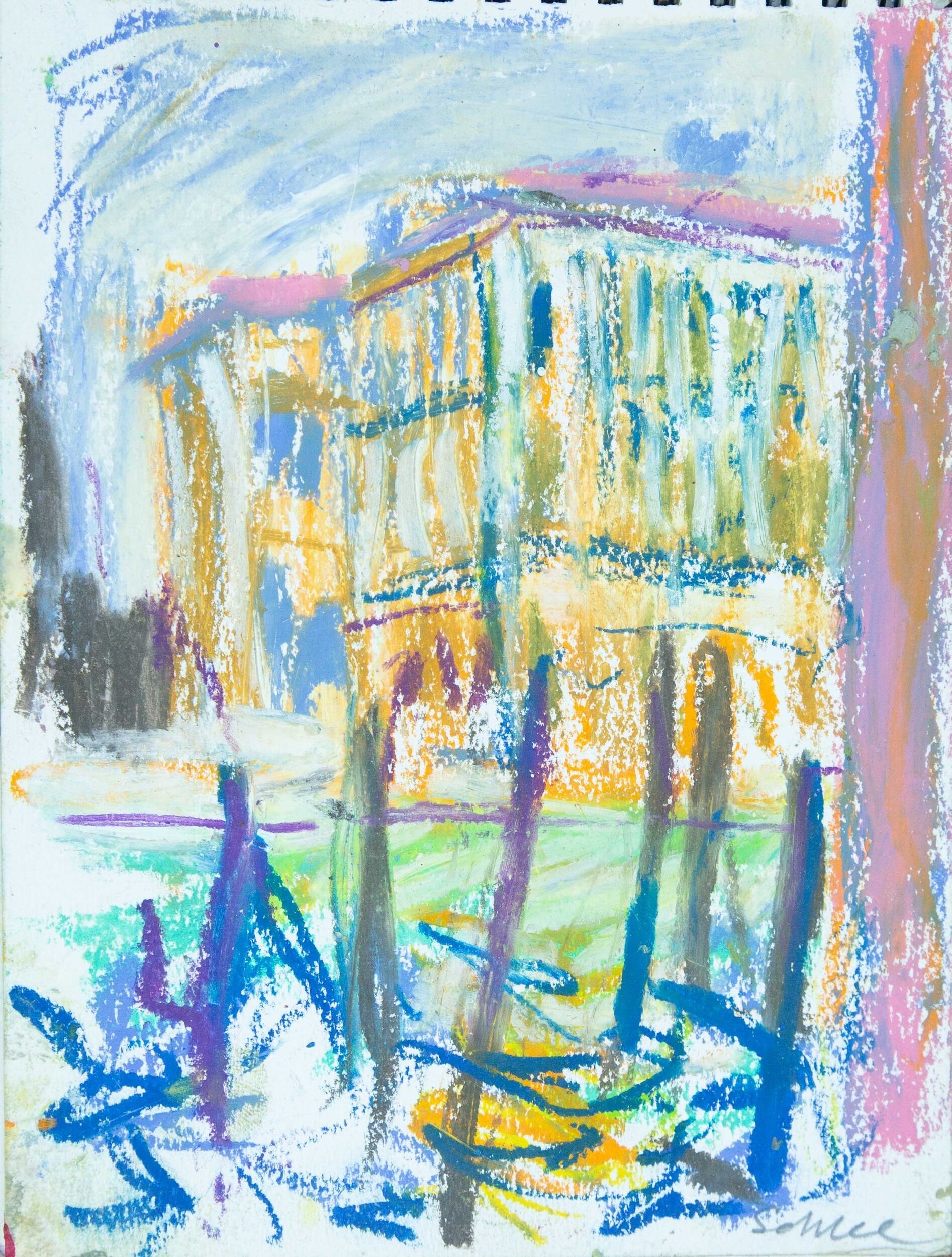Venice Observed
Gallery 8, August 24-29, 2020
8 Duke Street, St James’s, London SW1Y 6BN
An exhibition of oil paintings and drawings describing Venice in two moods
bright sunshine and veiled sunlight.
‘Bridge near gondola repair shed’ - 51cm x 61cm oil on board
Drawing the sunshine
I spent one very quick, productive, dazzling March day in Venice drawing small colour pastel sketches in sparkling sunshine. All seemed worth keeping. When I painted some of them up to a large size in oils I realised I hadn’t done any of the traditional views of St. Marks Square and its environs.
‘Grand canal from Rialto bridge’ - 82cm x 102cm oil on board
Drawing the gloom
So, after studying Turner’s views I went again, this time in November, to fill the gap. But far from the astonishing light I had before, I encountered a drizzling dark day. It was at the end of the Venice floods and the sheets of water in St.Mark’s Square made unexpected reflections which gave an entirely different atmosphere to theVenice I recorded earlier in the year. Undaunted I drew what was before me. At the next morning the sun was trying to break through the gloom and it lit the theatrical Venice set in a more cheerful haze. Again it was not the Venice one thinks one will remember but a more etherial confection.
Click here to see virtual catalogue.
How to paint the difference
When I started to paint up these second batch of sketches in the studio I realised that the bright stabs of colour that I used in the sunny pictures would not work with the new quieter subjects. But I determined not to abandon my usual approach to oil painting but instead tone down the bright colour content of my brushstrokes rather than dissolve one section of paint with another. I tried to keep the ‘style’ but lower the colour key.
There was another thing that surprised me. I found that when I enlarged the small drawing to a much larger size my natural tendency was to correct the misdrawing of the sketch by straightening lines, especially of the arches and windows which I had ‘indicated’ rather than recorded in the small version. I quickly discovered that was a mistake. The casual suggested marks were an essential part of the liveliness of the sketch. If I was to successfully transfer that liveliness to the painting I had to enlarge every mark, warts and all. The result is a picture that has a whiff of Soutine about it. The distortions were essential to achieving a feeling of spontaneity to the whole. Often turning both the sketch and the painting upside down was the only way I could divorce myself from the urge to correct ‘mistakes’. I also found my paint interpretation was sometimes too contrasty, and that took time to realise and time to put right.







































